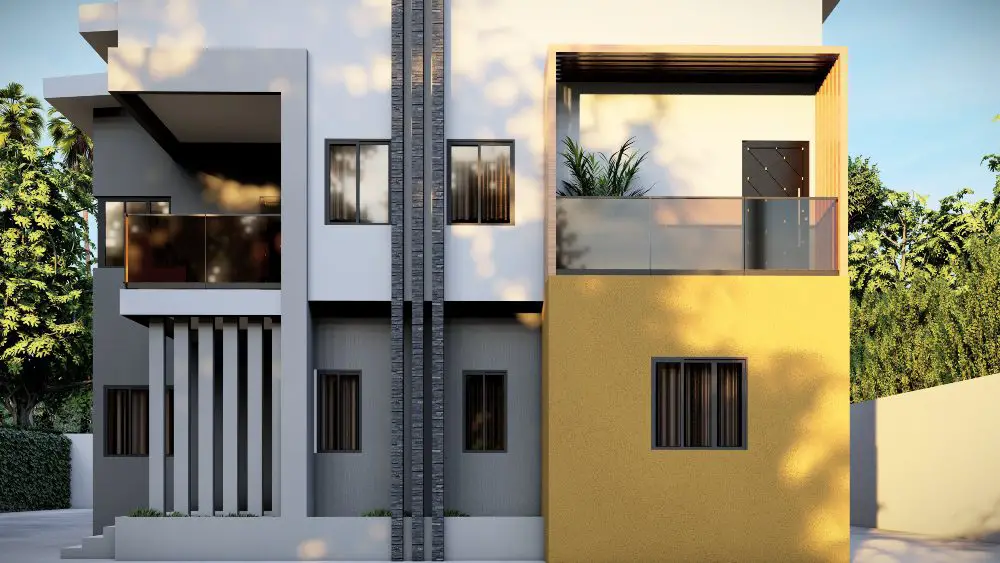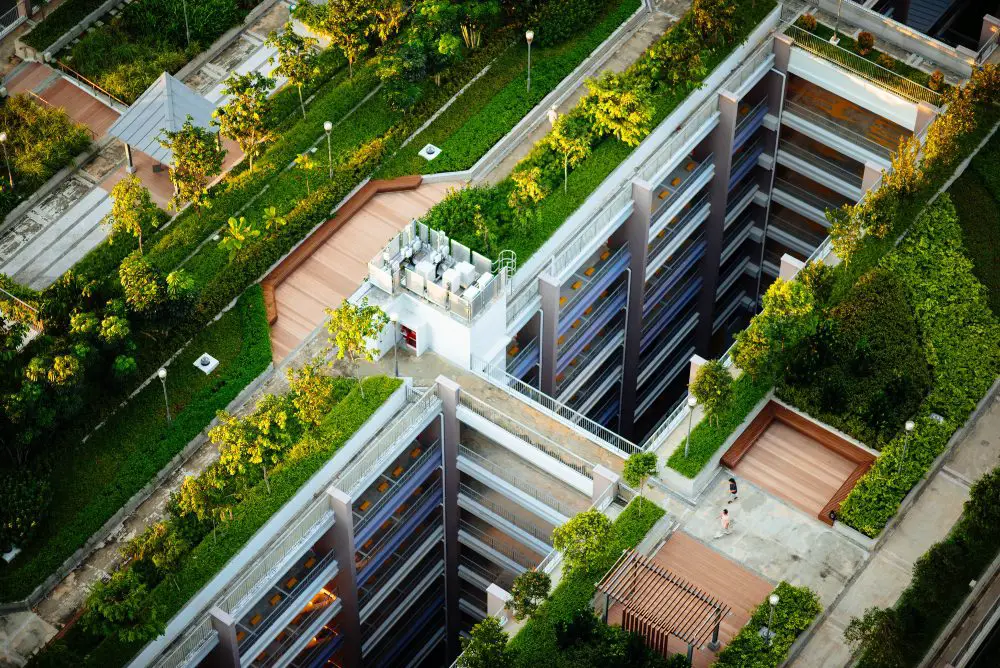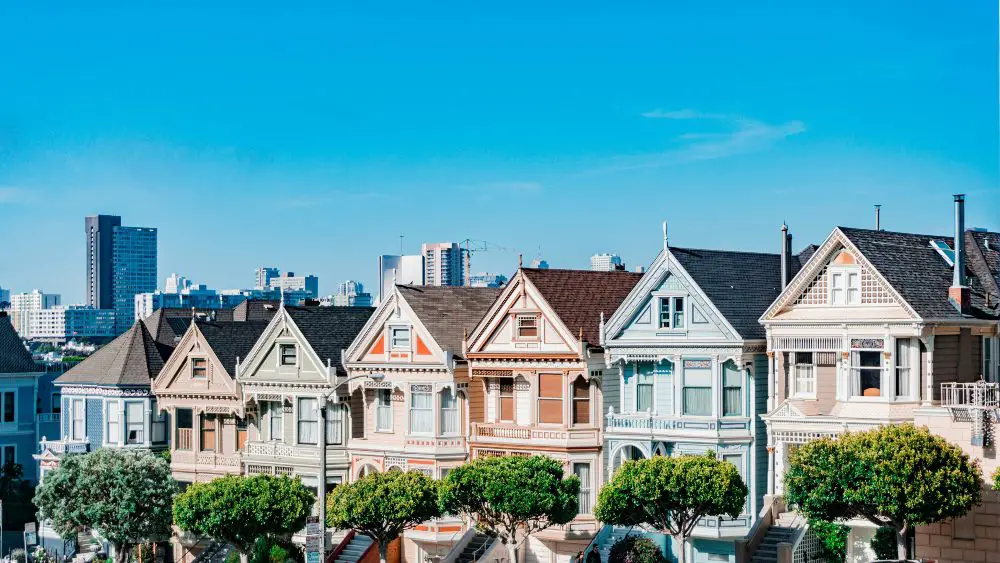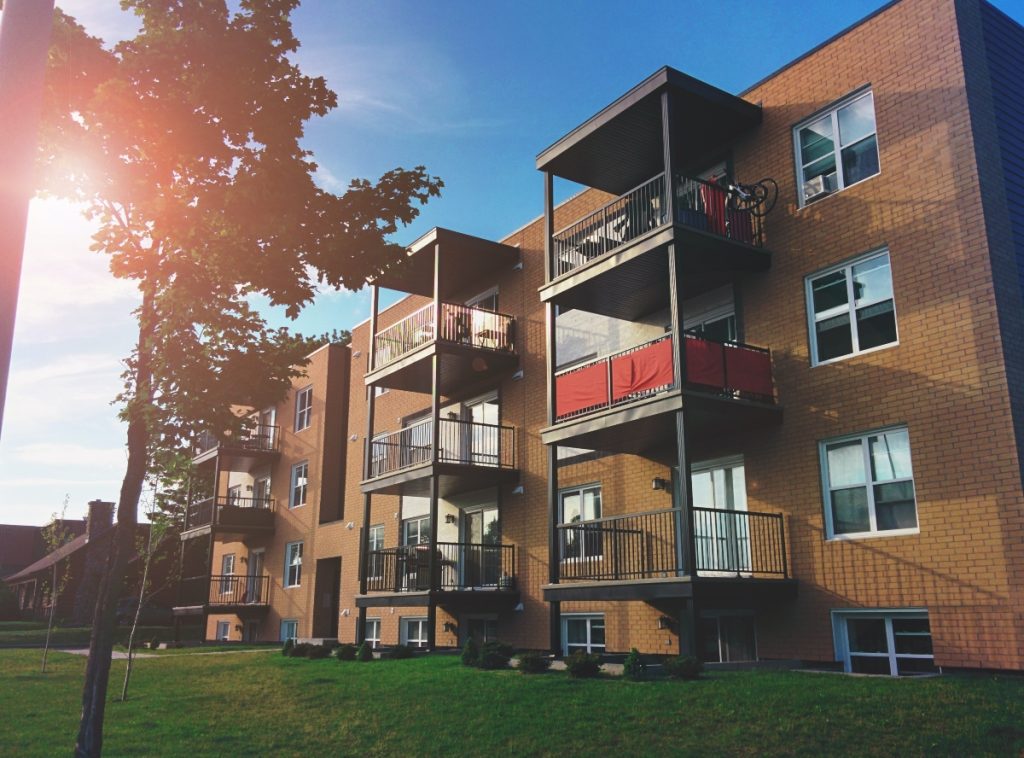Multifamily homes are reshaping urban living. These structures offer sustainable design solutions, catering to the growing demand for efficient, community-focused living spaces. This article explores how multifamily homes revolutionize urban landscapes, focusing on sustainable design elements.
Contents
- 1 What are Multifamily Homes
- 2 Community and Living Spaces
- 3 Future Trends
- 4 FAQ on Design Solutions for Multifamily Homes
- 4.1 What are Multifamily Homes?
- 4.2 How Can Multifamily Homes Be Sustainable?
- 4.3 What are Some Common Amenities in Multifamily Homes?
- 4.4 How Do Multifamily Homes Promote Community Living?
- 4.5 How can Smart Home Technology benefit multifamily homes?
- 4.6 How Does the Design of Multifamily Homes Impact Energy Efficiency?
- 4.7 Can Multifamily Homes Accommodate Families of Different Sizes?
- 4.8 What Future Trends Are Expected in Multifamily Homes?
- 4.9 How Do Multifamily Homes Enhance Urban Living?
- 5 Conclusion
What are Multifamily Homes
Multifamily homes are giving people more living space options in major cities. This section delves into these structures and why they’re crucial in today’s cities.
Definition and Importance
Multifamily homes, encompassing a variety of residential buildings, are pivotal in addressing today’s urban living challenges. Their significance extends beyond the basic definition, as they embody a modern lifestyle choice, particularly in urban landscapes.
In the heart of bustling cities, where space is a coveted commodity, multifamily homes emerge as a practical solution. These structures maximize the use of limited urban land, offering space-efficient living options without sacrificing comfort or accessibility. The design of multifamily homes often reflects the complexities of urban living, balancing the need for personal space with communal living.
Moreover, their role in providing affordable housing options underscores the importance of multifamily homes in urban areas. The increasing population in cities has escalated the demand for housing that is both economical and accessible. Multifamily homes address this need effectively, making them a key component in the urban housing market. They offer affordability and ensure that residents have access to essential urban amenities and transportation.
Furthermore, multifamily homes contribute significantly to the social fabric of urban areas. These residences foster community among inhabitants, often lacking in highly urbanized settings.
By living nearby, residents of multifamily homes have unique opportunities to connect and engage with their neighbors, creating vibrant, supportive communities within the urban landscape.
Evolution in Urban Settings
The story of multifamily homes in our cities is one of transformation and growth. From their humble beginnings as basic housing options, these structures have become vital cogs in the urban machine, rising to meet the complex challenges of city life.
Imagine the early days of multifamily homes: simple, unassuming buildings primarily aimed at providing shelter. But as our cities buzzed and thrived, these homes began to evolve. Today, they stand proudly, not just as residences, but as beacons of architectural creativity and environmental responsibility. They’re not merely reacting to urban challenges like the squeeze for space or the push for greener living; they’re actively shaping a better urban future.
Think of the heart and soul poured into these homes by architects and developers, who now diligently weave sustainable features into every fabric of these buildings. Energy-saving designs, renewable materials, and lush green spaces aren’t just added benefits. These homes are integral parts of a multifamily home’s identity.
But perhaps the most heartwarming evolution of multifamily homes is how they’ve become cradles of community. These homes offer a remedy in the bustling maze of city life, where loneliness can easily creep in amidst the crowd. Shared gardens where neighbors meet, and bond, playgrounds where children’s laughter rings out, and cozy lounges where stories and smiles are exchanged are the new village squares, fostering connections and a strong sense of belonging.
As our urban landscapes grow and change, multifamily homes are not just keeping pace but leading the charge. They’ve moved beyond simply offering a place to rest our heads. They now stand for a lifestyle where living sustainably and forming meaningful community ties are at the forefront. This is the essence of modern urban living, beautifully encapsulated in the ever-evolving multifamily home.

Sustainable Design Principles in Multifamily Homes
Sustainable design is at the core of modern multifamily homes. This section explores how these principles are being integrated to create environmentally friendly and efficient urban living spaces.
Energy Efficiency Strategies
Energy efficiency is a cornerstone of sustainable design in multifamily homes, playing a vital role in reducing environmental impact while ensuring resident comfort.
Incorporation of Energy-Efficient Appliances and Lighting
Modern multifamily homes are increasingly equipped with energy-efficient appliances. You have freezers, laundry machines, microwaves, and air-conditioners that use less power to run.
Similarly, LED lighting is becoming standard in these homes. These lamps create a bright area with less power, helping homeowners cut down on electric bills.
Smart Home Technologies
Smart home technologies are revolutionizing energy efficiency in multifamily homes. These systems allow residents to remotely control heating, lighting, and other appliances or through automated settings.
Smart thermostats, for example, can learn a resident’s schedule and adjust temperatures accordingly, reducing energy use when the apartment is unoccupied. Similarly, smart sensors can control lighting based on occupancy or natural light levels, further optimizing energy consumption.
Strategic Window Placement and High-Quality Insulation
The design and orientation of windows play a critical role in a building’s energy efficiency. Strategically placed windows can maximize natural light and heat from the sun during colder months, reducing the need for artificial lighting and heating. Conversely, shading devices and reflective coatings can prevent excessive heat gain in warmer climates.
Alongside window design, high-quality insulation is critical. Proper insulation helps maintain a consistent indoor temperature, reducing the demand on heating and cooling systems. This saves energy and enhances the overall comfort of the living space.
Energy-Efficient Building Materials
The materials used in construction can also contribute to the energy efficiency of multifamily homes. Materials with high thermal mass, such as concrete and stone, can absorb and store heat, helping to regulate indoor temperatures. Additionally, reflective roofing materials can deflect sunlight and reduce heat absorption, keeping the buildings cooler.
Integrating these energy efficiency strategies, multifamily homes contribute to environmental sustainability and offer long-term cost savings for residents. These strategies showcase how thoughtful design and technology can work together to create efficient and comfortable urban living spaces.
Use of Sustainable Materials
The selection of building materials is crucial in constructing multifamily homes, directly influencing their sustainability and environmental impact.
Reclaimed and Recycled Materials
Reclaimed wood and recycled steel are prime sustainable materials used in multifamily homes. Reclaimed wood, often sourced from old buildings or structures, offers both environmental benefits and aesthetic appeal. It reduces the need for new timber, helping to conserve forests and reduce deforestation.
Recycled steel is another eco-friendly choice, minimizing the demand for new raw materials and the energy-intensive processes associated with steel production. By incorporating these materials, multifamily homes support recycling efforts and add unique character and history to the construction.
Renewable Resources
Using materials from renewable resources is another aspect of sustainable construction. Hemp bricks are a good example that are made from sustainable plants. It is an excellent material for flooring, cabinetry, and structural elements.
Cork, another renewable material, is gaining popularity for insulation and as a flooring option due to its natural thermal and acoustic properties.

Low-VOC and Non-Toxic Materials
The health of residents is a key consideration in multifamily homes. Low-VOC paints and finishes are essential in this regard. VOCs (volatile organic compounds) are chemicals found in many traditional paints and building materials that can evaporate into the air and cause health issues.
Low-VOC options provide safer, healthier indoor air quality for residents. These materials are also safe for surrounding plant life and living creatures, especially pets.
Sustainable Flooring Options
Sustainable flooring options like linoleum, made from natural materials like linseed oil and jute, are also integral to eco-friendly multifamily homes. Unlike vinyl, linoleum is biodegradable and does not release harmful toxins. Recycled glass tiles offer an alternative for flooring and wall applications, turning waste materials into durable, attractive finishes.
Green Roofing Materials
Sustainable materials like green roofs or cool roofs are becoming more common in roofing. Green roofs covered with vegetation improve insulation, reduce stormwater runoff, and increase biodiversity. Cool roofs reflect more sunlight and absorb less heat, reducing the need for air conditioning and combatting the urban heat island effect.
Water Conservation Techniques
Water conservation is fundamental to sustainable design in multifamily homes, addressing the crucial need for efficient water use and management.
Rainwater Harvesting Systems
Rainwater harvesting is a key technique used in multifamily homes to conserve water. A system of basins, pipes, and storage tanks reuses the rain for gardening and cleaning.
By utilizing rainwater, these systems significantly reduce the demand for treated municipal water, leading to substantial water savings and decreased utility costs for residents.
Water Recycling and Greywater Systems
Water recycling, particularly through greywater systems, is becoming increasingly common in multifamily homes. Greywater, including water from sinks, showers, and laundry, is treated and reused for purposes where potable water is unnecessary.
This can include landscape irrigation and toilet flushing. Implementing greywater systems reduces water consumption and lessens the load on municipal sewage systems.
Efficient Wastewater Management
Efficient wastewater management in multifamily homes involves innovative systems that treat and reuse wastewater on-site. These systems can filter and purify wastewater to a level safe enough for certain uses, reducing water demand. This approach conserves water and reduces the environmental impact of wastewater disposal.
Low-Flow Fixtures
Installing low-flow fixtures in bathrooms and kitchens is a straightforward yet effective water conservation technique. Low-flow toilets, showerheads, and faucets reduce water usage significantly without compromising performance.
For instance, low-flow toilets use less than half the water of traditional toilets per flush, while modern low-flow showerheads provide a satisfying shower experience with much less water.
Smart Water Management Systems
Smart water management systems are an emerging trend in multifamily homes. These systems use sensors and smart meters to monitor water usage in real-time, identify leaks, and provide data for optimizing water use. Such technology not only helps in conserving water but also aids in educating residents about their water consumption patterns, promoting more sustainable usage habits.
Using these water conservation techniques demonstrates a commitment to sustainability in multifamily homes. By reducing water consumption and managing water resources more efficiently, these homes play a vital role in preserving this essential resource for future generations.

Green Spaces and Biodiversity
Adding green spaces into the design of multifamily homes is essential for enhancing biodiversity and creating a harmonious connection between residents and nature.
Rooftop Gardens
Rooftop gardens are popular in multifamily homes, turning underutilized spaces into vibrant green areas. These gardens allow families to grow their own produce or socialize with each other. Rooftop gardens also play a role in managing stormwater, reducing runoff, and improving the overall thermal performance of the building.
Vertical Green Walls
Vertical green walls are another innovative way to incorporate greenery in multifamily homes, especially in densely populated urban areas with limited horizontal space. These living walls are visually appealing and beneficial for air purification.
Green walls act as natural air filters, absorbing pollutants and releasing oxygen, thus improving the air quality around the building. Additionally, vertical green walls can help regulate the temperature inside the building, reducing the need for artificial heating and cooling.
Communal Outdoor Spaces
Communal outdoor spaces in multifamily homes are essential for fostering community engagement and providing residents access to nature. Outdoor spaces like gardens or playgrounds allow members of different families to interact with each other.
Spaces within homes for multiple families can be made functional where people can relax and socialize. Communal gardens, in particular, can encourage resident participation in gardening, fostering a sense of community and responsibility towards the environment.
Incorporating Local Flora
In designing green spaces, the use of local and native plants is crucial. Native plants are better adapted to the local climate and soil conditions, requiring less water and maintenance. They also provide essential habitats for local wildlife, including birds and pollinators, thus supporting local ecosystems and enhancing biodiversity.
Sustainable Landscape Management
Sustainable landscape management practices are vital in maintaining these green spaces. This includes using organic fertilizers, practicing natural pest control, and implementing efficient irrigation systems, like drip irrigation, to minimize water usage.
These practices ensure that the green spaces are beneficial for residents and wildlife and are environmentally sustainable.
Building Orientation and Natural Light
The orientation of a multifamily home is a critical factor in its design, impacting both energy efficiency and the well-being of its residents through natural light exposure.
Maximizing Sunlight Exposure
The strategic orientation of multifamily homes is essential for maximizing natural light and solar heat gain. In colder climates, buildings can be oriented to capture maximum sunlight during the winter, reducing the need for artificial heating.
The orientation might focus on minimizing direct sunlight exposure in warmer climates to keep the interiors cool. This thoughtful placement of buildings reduces energy consumption and ensures that natural light evenly reaches all living spaces, creating a more inviting and comfortable environment for residents.
Utilizing Natural Ventilation
The orientation of a building also plays a significant role in natural ventilation. By aligning with prevailing wind patterns, multifamily homes can enhance airflow through the building, reducing the reliance on air conditioning and mechanical ventilation.
Window Design and Placement
The design and placement of windows are integral to leveraging natural light. Larger windows and glass doors can be positioned to capture the most sunlight, especially in common areas and living spaces.
High-performance windows with energy-efficient glazing can reduce heat loss in winter and heat gain in summer, maintaining a comfortable indoor temperature year-round.

Shading and Overhangs
In addition to window placement, shading structures like overhangs, louvers, and pergolas are important in managing sunlight exposure. These features can block intense summer sun, allowing lower-angle winter sun to enter the building. This approach not only contributes to thermal comfort but also helps in reducing glare and the fading of materials inside the homes.
Reflective Surfaces and Interior Design
Reflective surfaces within the home can also enhance natural light penetration. Light-colored walls, ceilings, and floors can reflect and distribute sunlight deeper into the living spaces, reducing the need for additional lighting. Strategic interior design, including the placement of mirrors and reflective décor, can further amplify the effect of natural light.
Community and Living Spaces
Community and living spaces within multifamily homes play a crucial role in enhancing the quality of life for residents. This section explores how these spaces are designed to foster community engagement and provide a balanced living experience.
Designing for Community Engagement
Creating spaces that encourage interaction among residents is vital in multifamily homes. These can include shared amenities like community gardens, fitness centers, and recreational areas.
Balancing Privacy and Shared Spaces
While community engagement is important, balancing it with individual privacy is key. The architectural design of multifamily homes often includes private balconies, terraces, or small gardens for each unit.
This provides residents with their own outdoor space, a retreat to relax and enjoy solitude. Soundproofing between units and designing for visual privacy are important considerations, ensuring that residents feel comfortable and undisturbed in their homes.
Accessibility and Inclusivity
Ensuring that community and living spaces are accessible and inclusive is essential. This includes designing easily navigable spaces for people with disabilities incorporating features like ramps, wide corridors, and elevators.
Sustainable Community Practices
Multifamily homes can also promote sustainable practices within their community spaces. This can involve initiatives like shared recycling programs, community composting, or even group projects focused on sustainability, such as rainwater harvesting or solar energy installations. Such practices benefit the environment and foster a sense of collective responsibility and engagement among residents.
Integrating Technology
The integration of technology in community spaces can enhance the living experience. This can include Wi-Fi in communal areas, smart systems for booking amenities, or digital notice boards for community announcements. Technology can streamline the management of shared spaces and facilitate communication among residents.
Future Trends
The landscape of multifamily homes is continually evolving, shaped by emerging trends and innovations. This section examines the future directions these homes will likely take, ensuring they remain at the forefront of urban living solutions.
Sustainability and Green Technology
Sustainability will continue to be a major focus in developing multifamily homes. Future designs are expected to integrate advanced green technologies like solar panels, energy storage systems, and smart grid connectivity. These features will reduce the environmental impact of multifamily homes and lower energy costs for residents.
Smart Home Integration
The integration of smart home technology is set to become more sophisticated in multifamily homes. Future trends include advanced climate control, security, and energy management automation systems. These technologies will provide residents with unprecedented convenience, safety, and efficiency.
Adaptable and Flexible Design
Multifamily homes are likely to embrace more adaptable and flexible designs. This could mean spaces easily modified to suit different family sizes or needs. Multi-use spaces, movable walls, and convertible furnishings are expected to become more prevalent, reflecting the dynamic lifestyles of urban dwellers.
Community-Centric Amenities
There will be a greater emphasis on community-centric amenities in multifamily homes. Future developments may include larger communal areas, shared workspaces, and facilities that promote social interaction and community building. These amenities will satisfy the growing desire for connected and engaged living environments.
Enhanced Connectivity and Accessibility
Connectivity and accessibility will be key themes in the future of multifamily homes. This will involve not just the physical design of buildings for accessibility but also the integration of technology for enhanced connectivity.
High-speed internet, communal digital platforms, and tech-enabled transport solutions will become standard, ensuring residents are always connected to the wider community and city.
Eco-Friendly Transportation Options
Eco-friendly transportation options are possible for people living in multifamily homes. Electric vehicle charging stations and bike-sharing facilities will become more available. These additions will cater to the increasing awareness and demand for sustainable and convenient transportation solutions in urban settings.
FAQ on Design Solutions for Multifamily Homes
What are Multifamily Homes?
How Can Multifamily Homes Be Sustainable?
What are Some Common Amenities in Multifamily Homes?
How Do Multifamily Homes Promote Community Living?
How can Smart Home Technology benefit multifamily homes?
How Does the Design of Multifamily Homes Impact Energy Efficiency?
Can Multifamily Homes Accommodate Families of Different Sizes?
What Future Trends Are Expected in Multifamily Homes?
How Do Multifamily Homes Enhance Urban Living?
Conclusion
Multifamily homes represent a pivotal shift in urban living, offering sustainable, efficient, and community-oriented solutions. As cities evolve, multifamily homes continue to redefine the landscape of urban living.




